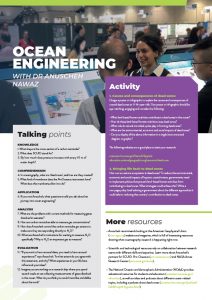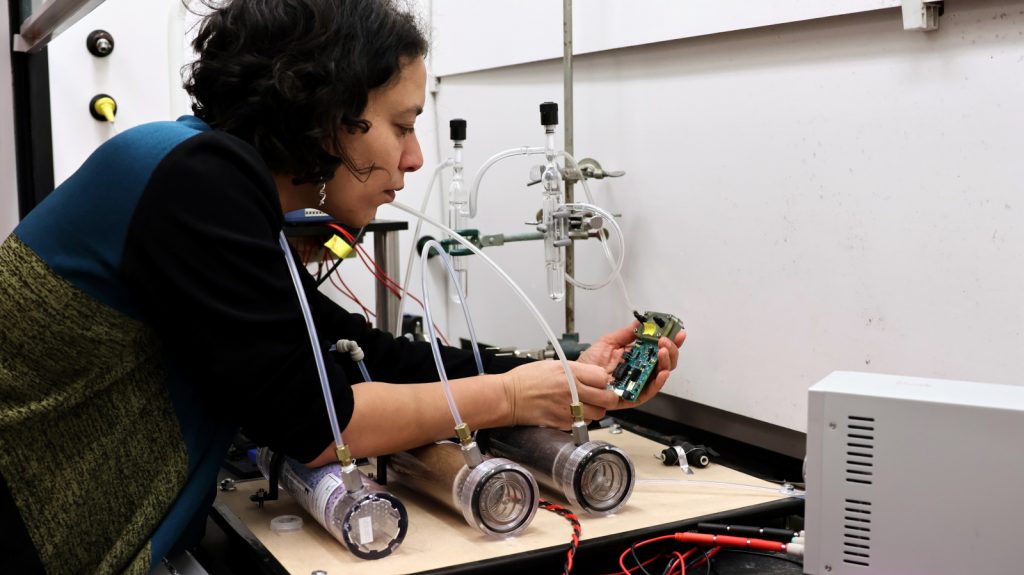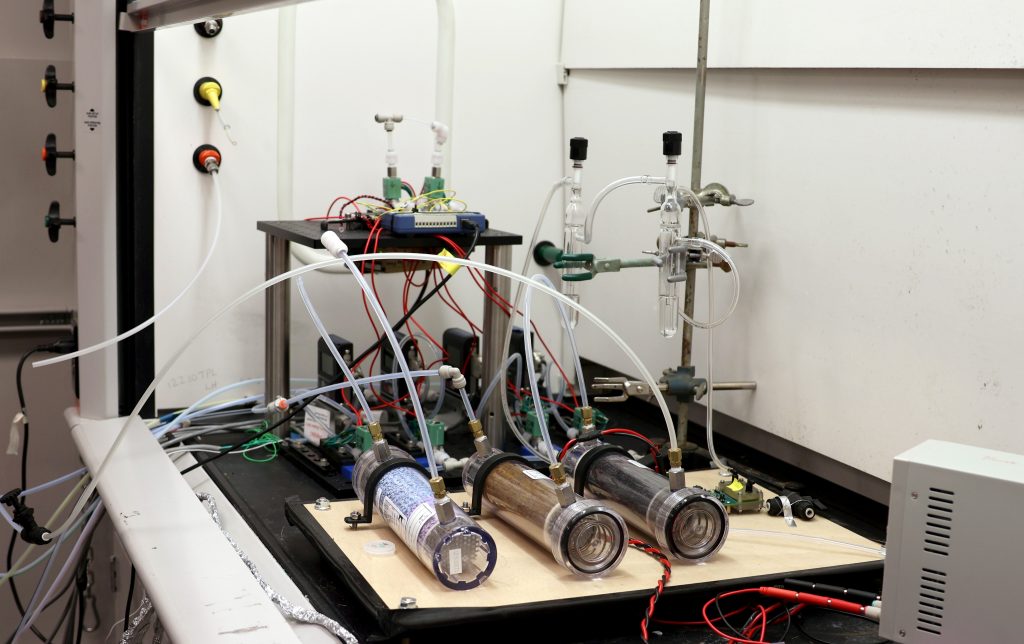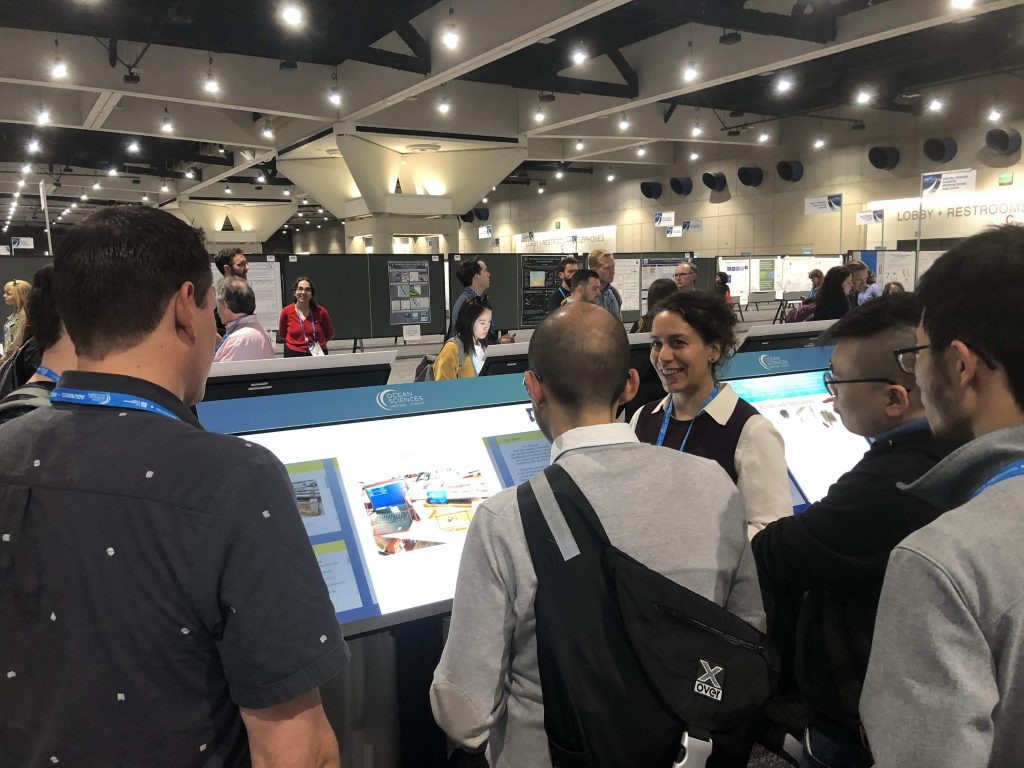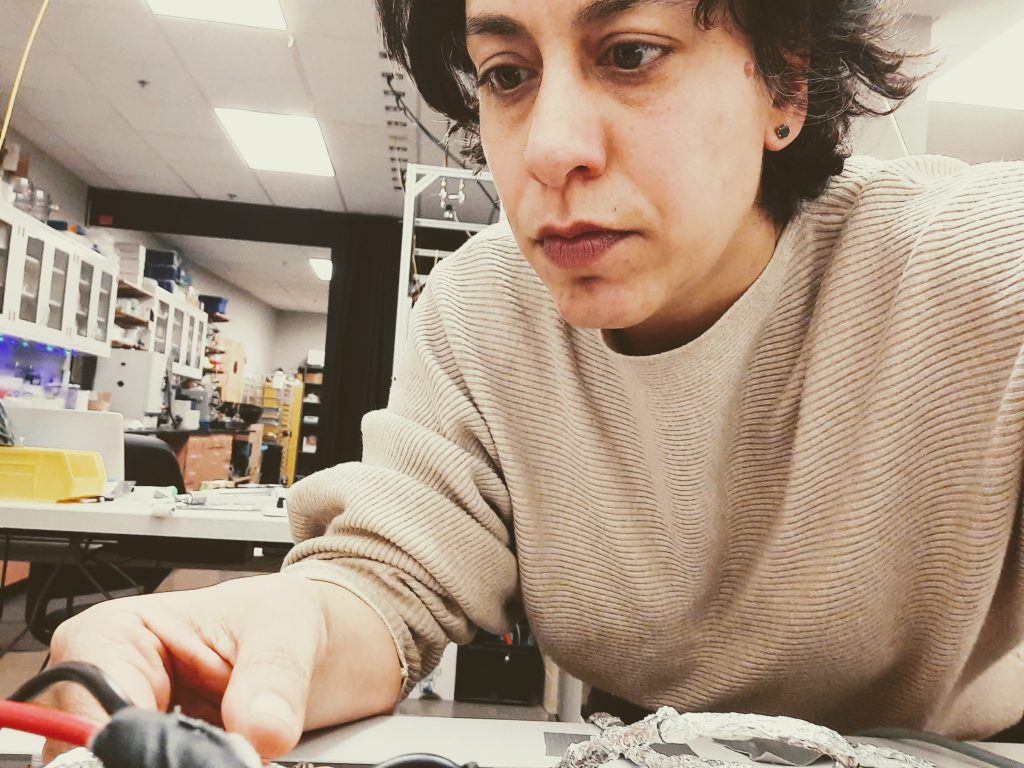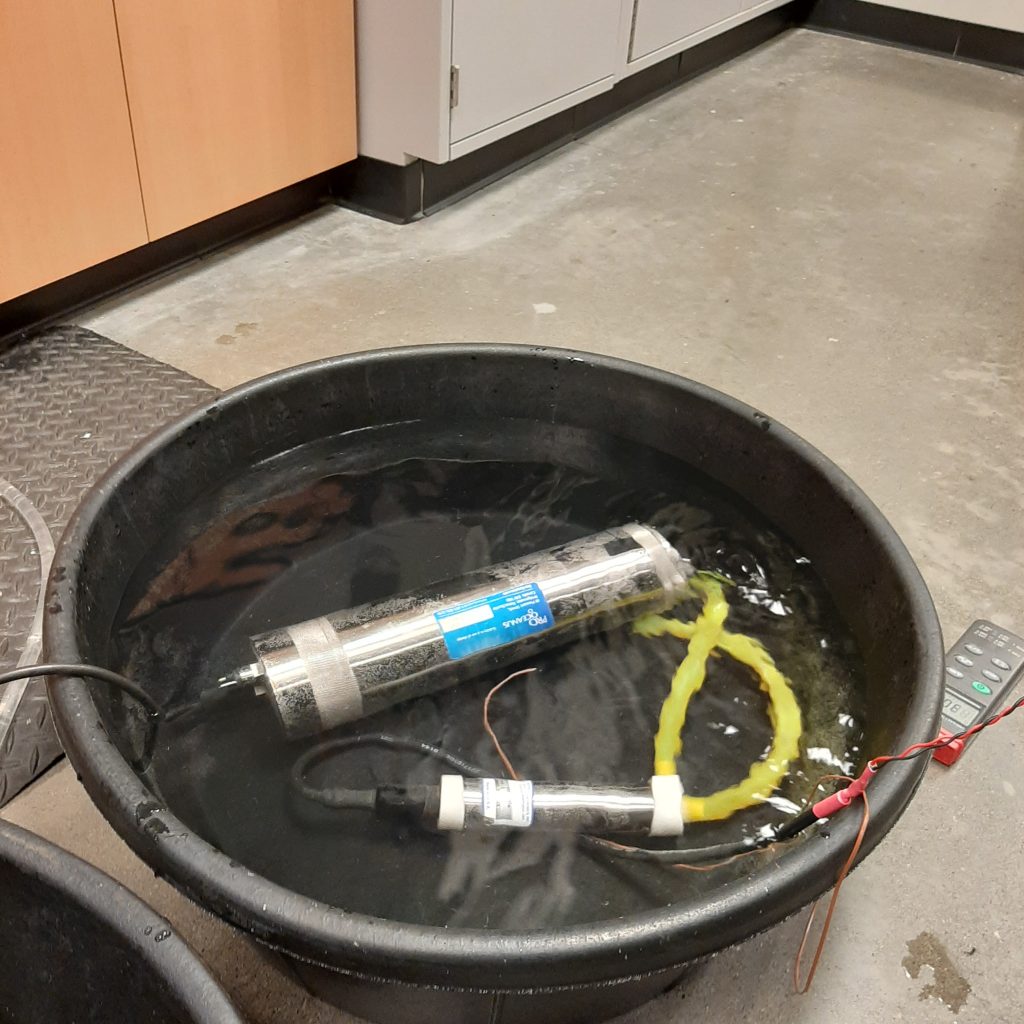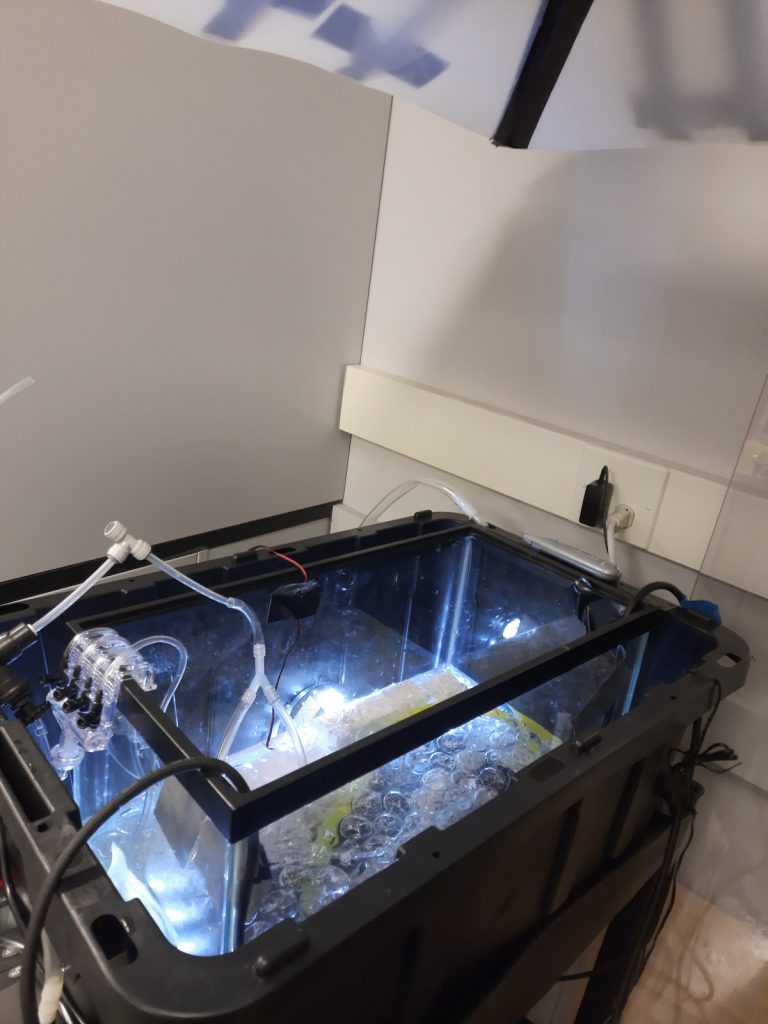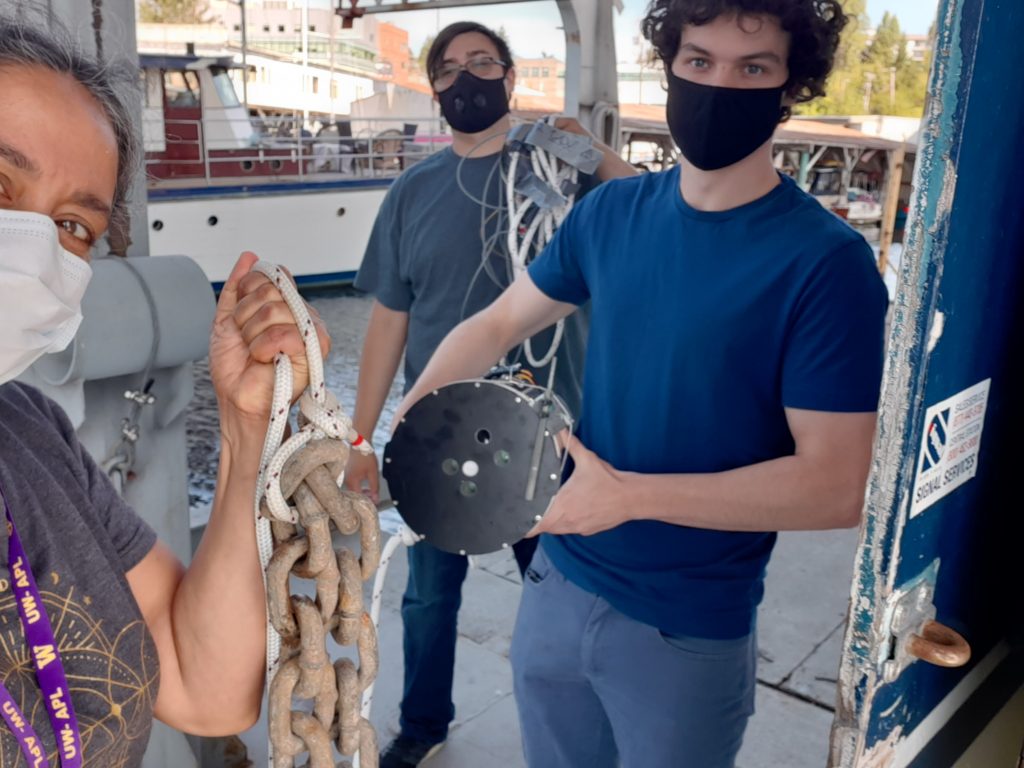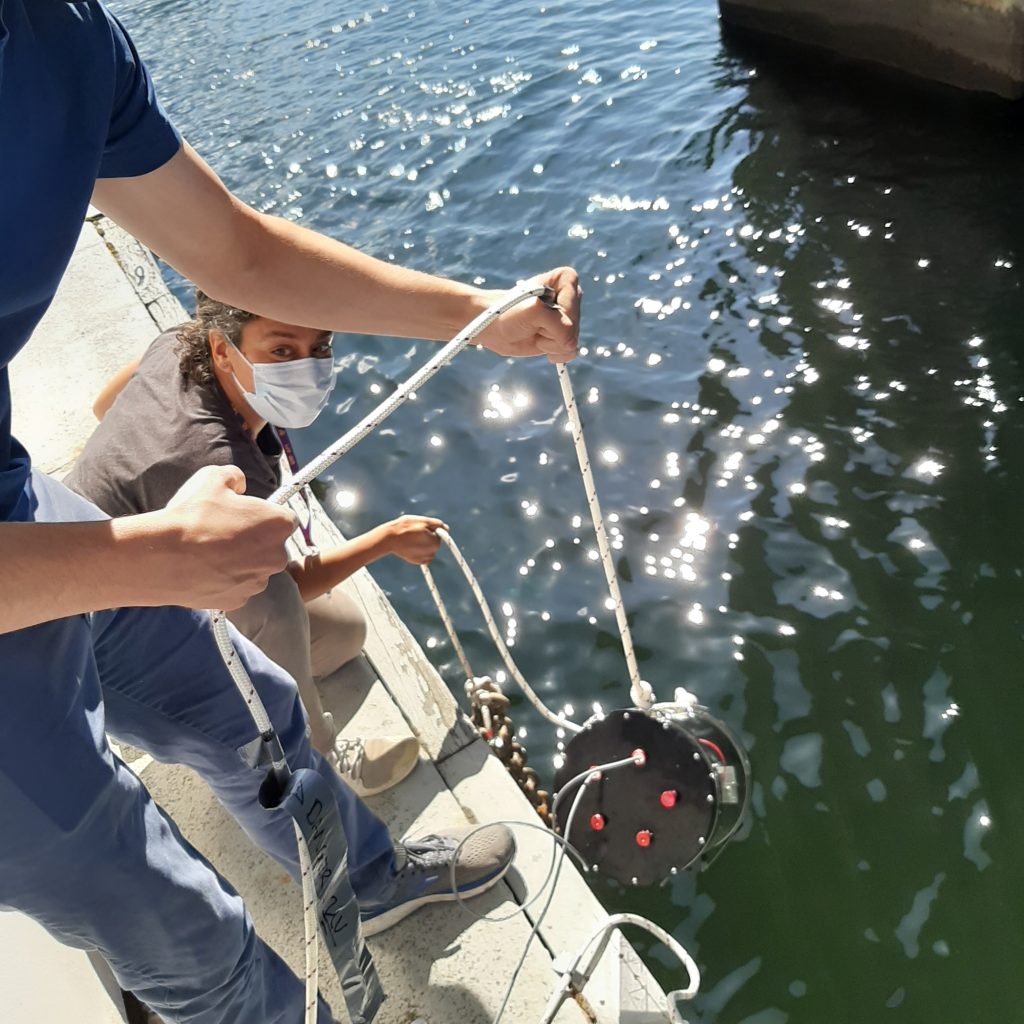How can we measure gases dissolved in seawater?
Nitrous oxide (N2O) is a greenhouse gas that is 300 times more powerful than carbon dioxide. The ocean is a significant source of N2O, but there is currently no easy way to measure how much N2O is dissolved in and released from seawater. At the University of Washington in the US, Dr Anuscheh Nawaz and her team are developing a technique to measure the concentration of dissolved N2O in our oceans directly and more efficiently.
TALK LIKE AN OCEAN ENGINEER
Atmosphere (atm) — a unit of measurement for pressure. One atmosphere is equal to the Earth’s average atmospheric pressure at sea level
Hypoxia or hypoxic waters — very low oxygen levels in a body of water. The usual oxygen concentration in seawater is ~8 mg/litre, in hypoxic waters it is below 2 mg/litre
In-situ — in the original place. An in-situ measurement is made directly on-site at the location of the variable being measured
Microbes — tiny, single-celled organisms, such as bacteria or fungi
Microbial cycle — the life and/or nutrient cycle that a microbe undertakes in combination with its environment
Nanometre — one billionth of a metre
Phytoplankton — microscopic marine algae which are a key part of ocean ecosystems
Wastewater — water that has been used, such as water from sinks, toilets, food scraps and chemicals
Across our planet, deep within the oceans, oxygen minimum zones (OMZs) exist. Occurring at depths of around 200 m to 1 km below sea level, these zones are the places in the ocean where oxygen levels in seawater are at their lowest.
OMZs can be created naturally or caused by humans. When humans allow fertilisers or wastewater to run into the oceans, the phytoplankton living at the ocean’s surface overfeed, which, in turn, can lead to coastal hypoxia or ‘dead zones’. “After there is an overshoot in nutrients at the ocean’s surface, the excess phytoplankton dies off and begins to decompose. Microbes responsible for decomposition use up the oxygen and create these so-called dead zones,” explains Dr Anuscheh Nawaz, a research scientist in the field of ocean engineering at the University of Washington. In dead zones, the concentration of oxygen is so low that very few organisms can survive.
“In areas of the water where little or no oxygen is available, a microbial cycle called ‘denitrification’ can occur where nitrous oxide (N2O) is released into the environment,” says Anuscheh. While a lack of nitrogen in the ocean can starve the ecosystem by not providing enough nutrients, too much nitrogen can create excessive plant growth, followed by decay that consumes oxygen, therefore suffocating fish and other organisms.
As a result, it is important that scientists have a way to measure the concentration of dissolved N2O in OMZs. “Nitrous oxide is the third most important greenhouse gas after carbon dioxide and methane,” says Anuscheh. “Direct measurements of it would be invaluable to know where marine microbes are exhaling N2O and how much they are exhaling.”
What are the limitations of current measurement techniques?
“So far, oceanographers can only directly measure dissolved methane (CH4), carbon dioxide (CO2) and hydrogen sulphide (H2S) in the world’s oceans,” says Anuscheh. To measure other gases, scientists carefully take samples of seawater and send these to a laboratory for analysis. “Scientists sometimes even put the laboratory on a ship, but it is cumbersome!” she adds.
Not only is this sampling method expensive and difficult, but for some very reactive gases, such as nitric oxide (NO), it can also be quite imprecise. This is because gases can change concentration through biological processes before they reach the laboratory to be measured. To develop a better technique, Anuscheh turned her attention to carbon nanotubes.
What are carbon nanotubes?
“Carbon nanotubes are very cool. They are layers of carbon atoms arranged in a tube shape with the cross-section of a hexagon,” Anuscheh says. Carbon nanotubes are extremely strong, only nanometres in diameter, and can be either electrically conductive or act as semiconductors.
“These carbon nanotubes can measure gases because the gas’s molecules adhere to their surfaces, which changes the nanotubes’ electrical properties,” Anuscheh explains. “To measure the concentration of a certain gas, we implant – or ‘dope’ – different materials, for examples metals, on the carbon nanotube’s surface.” This enables a resistance change when the nanotube is exposed to a particular gas of interest. “For example, to detect N2O, the carbon nanotubes are doped with gold particles which act as a catalyst.” This is known as a carbon nanotube-based gas sensor.
Anuscheh’s team can make the sensor selective so that it clearly distinguishes which gas it is responding to, by adding several differently doped nanotube materials to the sensor array. This ensures the sensor is responding to N2O specifically and not to oxygen concentrations, humidity, or any other condition that might affect the sensor’s response.
What carbon nanotube technology is Anuscheh developing?
Anuscheh calls her research project SCUID, which stands for Submergible Carbon nanotube Underwater Instrument for dissolved gas Detection. “With SCUID, we are striving to solve the problem of being able to measure important greenhouse gases in-situ in the ocean,” she says.
SCUID uses current technologies and works alongside technology companies, such as ProOceanus which makes a submergible instrument that can determine the total pressure of gases dissolved in water. The ProOceanus instrument’s housing is made of titanium, so that it can withstand the huge pressures it is exposed to while underwater. This is important, as with every 10 m of water depth, pressure increases by one atmosphere. “The instrument can descend to 6000 m below the water’s surface,” Anuscheh explains. “It has a semipermeable membrane that lets gases through but stops liquids, which means that water cannot enter the casing, but the gases dissolved in the water can.” Anuscheh combined this instrument with carbon nanotube gas sensors made by Dr Jing Li’s research group at NASA Ames Research Center. This allowed her to create a submergible device that can measure dissolved gases far below the water’s surface.
“When developing SCUID, we had to understand exactly what environment the carbon nanotube sensor needed to function in, and come up with engineering solutions to create this environment inside the submergible instrument,” says Anuscheh.
Anuscheh then had to account for all the different conditions that the SCUID instrument would find when underwater. “The carbon nanotube sensors would experience different temperatures, humidity levels and gas concentrations, compared to what they would experience in a pure laboratory setting,” she says. These differences needed to be accounted for so that they would not affect SCUID’s measurements. For example, Anuscheh’s group implemented a resistive heater on the carbon nanotube sensor chip so that its temperature would stay constant.
What challenges did Anuscheh face?
Anuscheh’s project involved people spread all over the continent, which meant that processes often took much longer than expected. When COVID-19 hit, co-ordination among the team became even more difficult. “For a while, the number of people allowed in one room was limited, which made testing our technologies hard. Our collaborators could not come to visit us and the materials we ordered took a long time to arrive,” she says.
Reference
https://doi.org/10.33424/FUTURUM361
Despite solving these hurdles, Anuscheh and her team unfortunately ran out of time and money to test SCUID in the ocean. However, setbacks such as this are part of the research process. High-risk-high-reward science often involves difficulties and Anuscheh is looking to the future. If she can tackle the remaining research questions and successfully deploy SCUID in the future, it will clear the way for the oceanography community to measure many gases of interest in-situ more efficiently which will improve our understanding of the oceans.
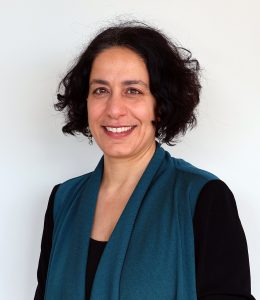 Dr Anuscheh Nawaz
Dr Anuscheh Nawaz
Department of Ocean Engineering, Applied Physics Laboratory, University of Washington, USA
Fields of research: Ocean Engineering, Instrumentation, Networked Sensors, Small Low-Power Sensor Systems
Research project: Developing a carbon nanotube sensor to measure the concentration of dissolved nitrous oxide (N2O) in seawater
Funders: National Oceanographic Partnership Program (NOPP), US National Science Foundation (NSF). This work was supported by the NOPP and NSF under award number 1841927. The contents are solely the responsibility of the authors and do not necessarily represent the official views of NSF.
ABOUT OCEAN ENGINEERING
Ocean Engineering is the branch of engineering that develops new equipment and techniques for exploring the ocean and its resources. The subject is interdisciplinary as it combines mechanical, electrical, civil and chemical engineering with an understanding of the ocean. In recent years, as the world’s population and the number of people living and working on the coast have increased, coastal engineering has become a bigger part of ocean engineering. Coastal engineers might focus on dealing with pollution issues from people living near the sea or look at how the consequences of climate change, such as rising sea levels resulting in erosion, may affect a community.
How did Anuscheh combine her knowledge of engineering and oceanography to create SCUID?
“SCUID was born from a conversation I had with a colleague who is a chemical oceanographer,” Anuscheh recounts. “Combining my expertise with his in-depth knowledge on denitrification led me to propose SCUID. To be able to propose and execute on interdisciplinary projects, I believe you need to be curious and open to learning from others. You also need a team that contains the necessary experts in their specific domains and the ability to lead with a vision in a way that brings the team together.”
Pathway from school to ocean engineering
• “To get into ocean engineering, a mechanical or electrical engineering degree is a straightforward path to take,” says Anuscheh. “Try to specialise in ocean-relevant themes whenever you can.” Some universities also offer undergraduate degrees in oceanography or ocean engineering.
• “Understand physics, chemistry, and/or biology deeply. If you can do that, you can recognise the underlying mechanisms of any problem,” says Anuscheh.
• Ocean engineers learn how to think as problem solvers. “Ask questions from different angles and remember that struggle is where learning happens,” says Anuscheh.
• Consider taking science communication or writing classes while at university, as good communication skills are useful for working in ocean science. “Being able to convey problems in a way that is simple but does not distort the concept is very important,” says Anuscheh.
• “In my opinion, we tend to specialise too early, and a breadth of experiences – anything from software programming to art or biotech – is valuable,” explains Anuscheh. “If you want to have unusual ideas, you need to have unusual experiences!”
Explore careers in ocean engineering
• Marine Insight has a useful page of information describing different careers within ocean engineering and marine science: www.marineinsight.com/careers-2/a-list-of-unique-and-interesting-marine-careers
• Anuscheh recommends taking community college courses while finishing high school. In the Pacific Northwest of the US, Everett Community College has an Ocean Research College Academy (ORCA) where students can study marine science: www.everettcc.edu/programs/stem-health-prof/orca/faculty
• According to Salary Expert, the average annual salary in the US for an ocean engineer is $73,000, but can be much higher if you are leading projects and paving the way for new science.
Meet Anuscheh
What were your interests when you were younger?
I wanted to help humans, animals and plants live together peacefully, and I very much believed it was within our ability to do so.
Who or what inspired you to become a scientist?
My father believed in me when others wouldn’t. My 5th grade teacher told me I would need to find other areas to focus on because mathematics was not for me. But both my parents, especially my father, told me that teachers have but one view into your capabilities and life, and that their opinions are not what define you. So I didn’t let me teacher’s comments discourage me. My father instilled in all of us kids the idea that science is a calm, deep way of looking at nature, and that mathematics is a beautiful way to describe it.
You have a background in plasma physics and space science. What pathway has led you to your current position as an ocean engineer?
During my degree in aerospace engineering, I was drawn to new and exciting research, which I found was more abundant in space sciences. I felt honoured to be offered a project in pulsed plasma research at the University of Stuttgart in Germany. After completing my PhD, I joined the NASA Ames Research Center to put techniques I had learnt during my PhD into practice. From there, I was powered by the desire from my early childhood to help the planet and humans live in symbiosis, and I started a company aiming to make gas sensors wearable and accessible for people anywhere. Having gained valuable skills and experience, I combined the research and networked gas sensor worlds and entered environmental instrumentation development at the Applied Physics Laboratory (APL).
What personal attributes have helped you to be such an interdisciplinary scientist?
I am motivated by my drive to make human life on this planet both possible and beautiful for years to come. The background I draw from every day, and when working on interdisciplinary subjects, is physics and the art of asking questions. What phenomenon can explain what I am seeing? How can this be matched with processes in physics? What is the next good question I can ask? I would consider myself brave, ambitious, persistent and curious. I think broadly at first and fill in the details later.
These attributes have helped me do interdisciplinary research. I align with engineers by training, with physicists and scientists in the way I ask questions, with artists in my heart, and with world travellers in the way I like to take things one step at a time.
What have been the highlights of your career so far?
I have many! Being at the University of Berkeley in the US opened my eyes to how international and creative the research world can be. Getting to work on my very own project from scratch during my PhD in Germany, with some of the most hard working and brilliant students I have met, was a fantastic experience. I am also very grateful to work with the NASA Ames Research Center in California and interact with technology and people every day. Winning the Greenovations challenge with my gas sensor start-up company in Seattle was thrilling, and having the opportunity to work at APL on oceanographic instrumentation was a dream come true.
What are your ambitions for the future?
I am intrigued to explore how humans can live in harmony by finding their personal way of connecting with nature. I believe this can ultimately resolve environmental problems that would otherwise be perpetuated in a different way.
What do you enjoy doing in your free time?
I enjoy being physically active: hiking, yoga, rock climbing, cycling. I also love martial arts, singing, making music with others and travelling.
Anuscheh’s top tips
1. Learn to be okay with standing out, and ask questions without wondering if someone else might already know the answer.
2. Whenever you can, find a community of other people who support you and cheer you on.
3. Don’t shy away from hard work. When curiosity has taken its course, grit can take you through the rest of what needs to be done.
4. Trust your gut – you will know when it is time to start a new chapter in life.
Do you have a question for Anuscheh?
Write it in the comments box below and Anuscheh will get back to you. (Remember, researchers are very busy people, so you may have to wait a few days.)


